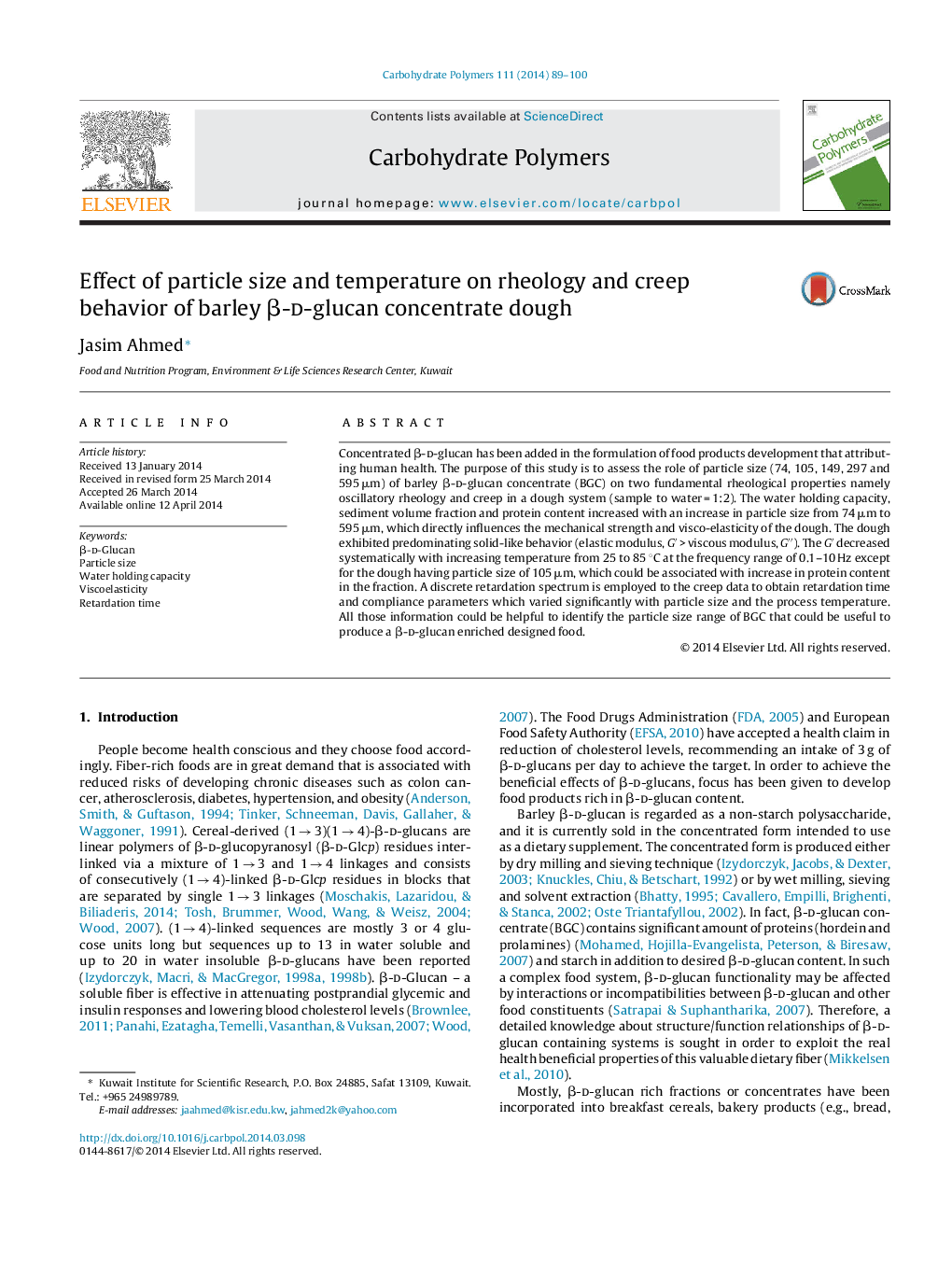| Article ID | Journal | Published Year | Pages | File Type |
|---|---|---|---|---|
| 7791285 | Carbohydrate Polymers | 2014 | 12 Pages |
Abstract
Concentrated β-d-glucan has been added in the formulation of food products development that attributing human health. The purpose of this study is to assess the role of particle size (74, 105, 149, 297 and 595 μm) of barley β-d-glucan concentrate (BGC) on two fundamental rheological properties namely oscillatory rheology and creep in a dough system (sample to water = 1:2). The water holding capacity, sediment volume fraction and protein content increased with an increase in particle size from 74 μm to 595 μm, which directly influences the mechanical strength and visco-elasticity of the dough. The dough exhibited predominating solid-like behavior (elastic modulus, Gâ²Â > viscous modulus, Gâ³). The Gâ² decreased systematically with increasing temperature from 25 to 85 °C at the frequency range of 0.1-10 Hz except for the dough having particle size of 105 μm, which could be associated with increase in protein content in the fraction. A discrete retardation spectrum is employed to the creep data to obtain retardation time and compliance parameters which varied significantly with particle size and the process temperature. All those information could be helpful to identify the particle size range of BGC that could be useful to produce a β-d-glucan enriched designed food.
Related Topics
Physical Sciences and Engineering
Chemistry
Organic Chemistry
Authors
Jasim Ahmed,
